10 takeaways from Big Tech’s big earnings — from protocol.com by David Pierce
What Apple, Facebook, Alphabet, Microsoft and Amazon earnings say about the state of tech.




10 takeaways from Big Tech’s big earnings — from protocol.com by David Pierce
What Apple, Facebook, Alphabet, Microsoft and Amazon earnings say about the state of tech.
Below are two excerpts from the Lecture Breakers Weekly — by Dr. Barbi Honeycutt — re: teaching asynchronous online courses + podcast choice boards
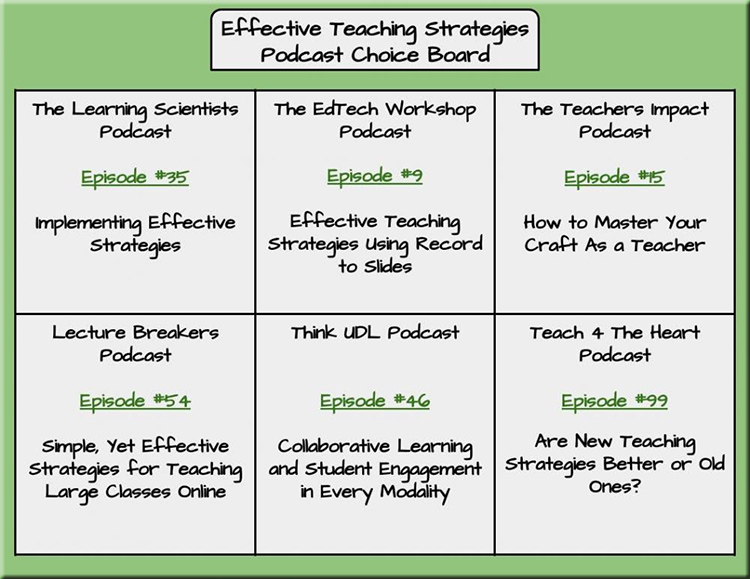
Above choice board created by Greg Jung
In this example, the teachers in a professional development workshop could choose which of the podcasts they wanted to listen to and discuss. I love this strategy combined with the use of podcasts! It could easily be adapted to any course as a creative way to increase student engagement and motivation.
Episode 75: How to Create More Engaging Asynchronous Online Courses with Dr. Monica Burns — by Barbi Honeycutt, Ph.D.
Podcasting for Educators — from techlearning.com by Erik Ofgang
Most educators have skills sets that translate well to the podcasting world. Here’s how to get started with your podcast.
Excerpt:
Tech & Learning talked with Young as well Dr. Kecia Ray and Dr. Frances Gipson, hosts of Tech & Learning’s Honor Role podcast, for some best practices and tips. We also collaborated with the six hosts of the AV SuperFriends podcast, asking questions for this story but recording the entire conversation for a future episode of their podcast. Watch for the release of that episode here.
From DSC:
I’d love to see even more teachers, trainers, and professors share their expertise out there. Podcasting is a great way to do that. And so is blogging. It would be nice to see the expertise of those folks reach a far greater audience — society — than just the (behind-the-paywall) journals.
From DSC:
This is what we’re up against –> Reskilling 1 billion people by 2030” — from saffroninteractive.com by Jessica Anderson
Excerpts:
According to the World Economic Forum, this statistic is a critical economic imperative.
Does this shock or scare you? Perhaps you’re completely unflappable? Whatever your reaction, this situation will undoubtedly impact your organisation and the way you tackle skills development.
…
What are the roadblocks?
So, we’ve laid down the gauntlet; an adaptable, agile, multi-skilled workforce. What stands in the way of achieving this? A recent survey of the top 5 challenges facing learning leaders sheds some light:
1. Building a learning culture
2. Learning in the flow of work
3. Digital transformation
4. Learner engagement and ownership
5. Keeping informed of best practices
From DSC:
The article mentions that nations could lose billions in potential GDP growth. And while that is likely very true, I think a far bigger concern is the very peace and fabric of our societies — the way of living that billions of people will either enjoy or have to endure. Civil unrest, increased inequality, warfare, mass incarcerations, etc. are huge concerns.
The need for a next-gen learning platform is now! The time for innovation and real change is now. It can’t come too soon. The private and public sectors need to collaborate to create “an Internet for learning” (in the sense that everyone can contribute items to the platform and that the platform is standards based). Governments, corporations, individuals, etc. need to come together. We’re all in the same boat here. It benefits everyone to come together.
From DSC:
Talk about streams of content! Whew!

I received an email from Adobe that was entitled, “This week on Adobe Live: Graphic Design.” (I subscribe to their Adobe Creative Cloud.) Inside the email, I saw and clicked on the following:
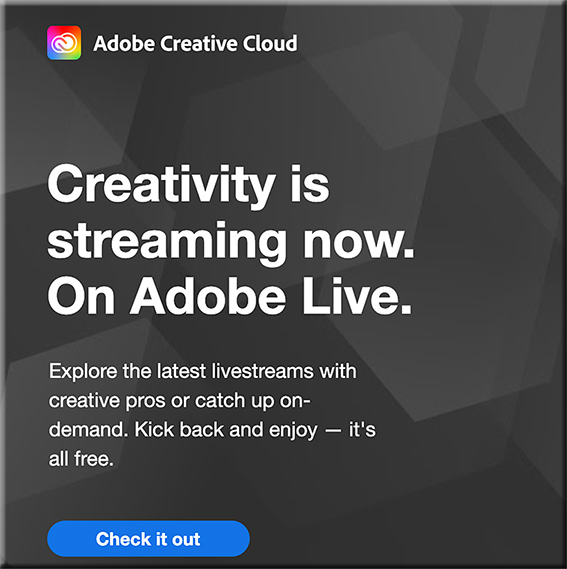
Below are some of the screenshots I took of this incredible service! Wow!
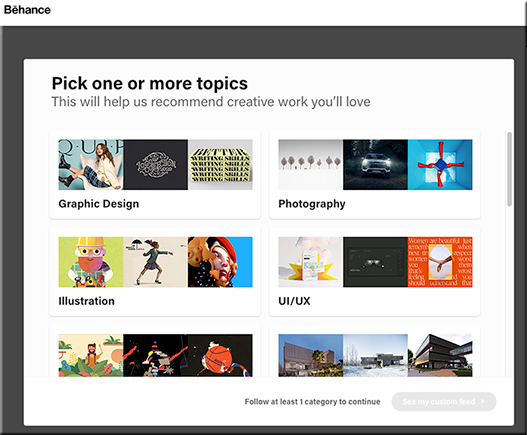
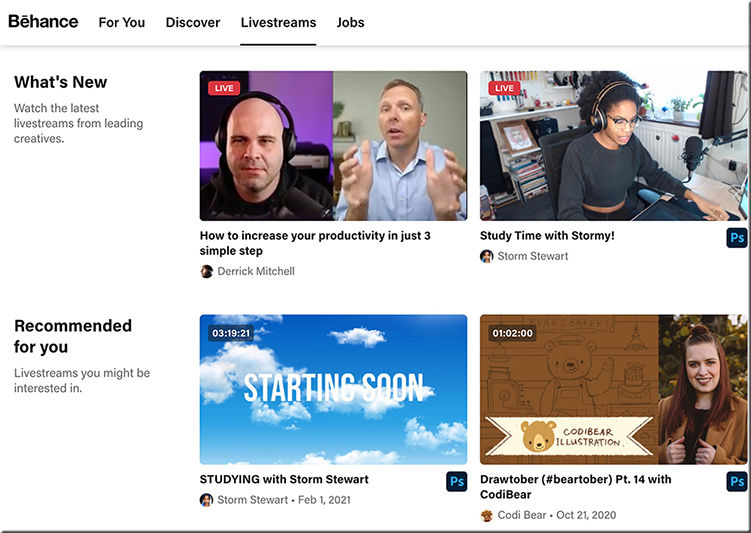
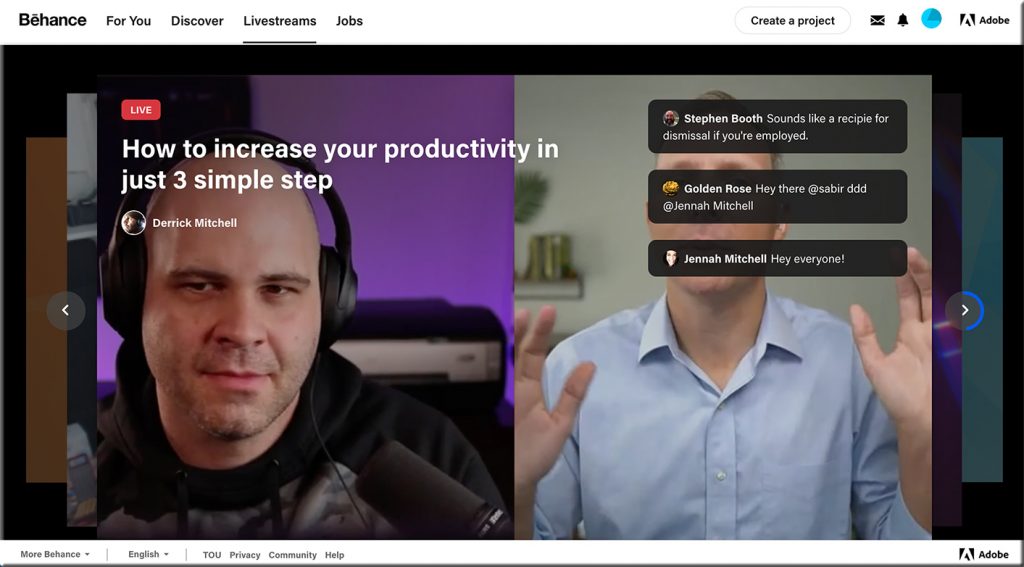
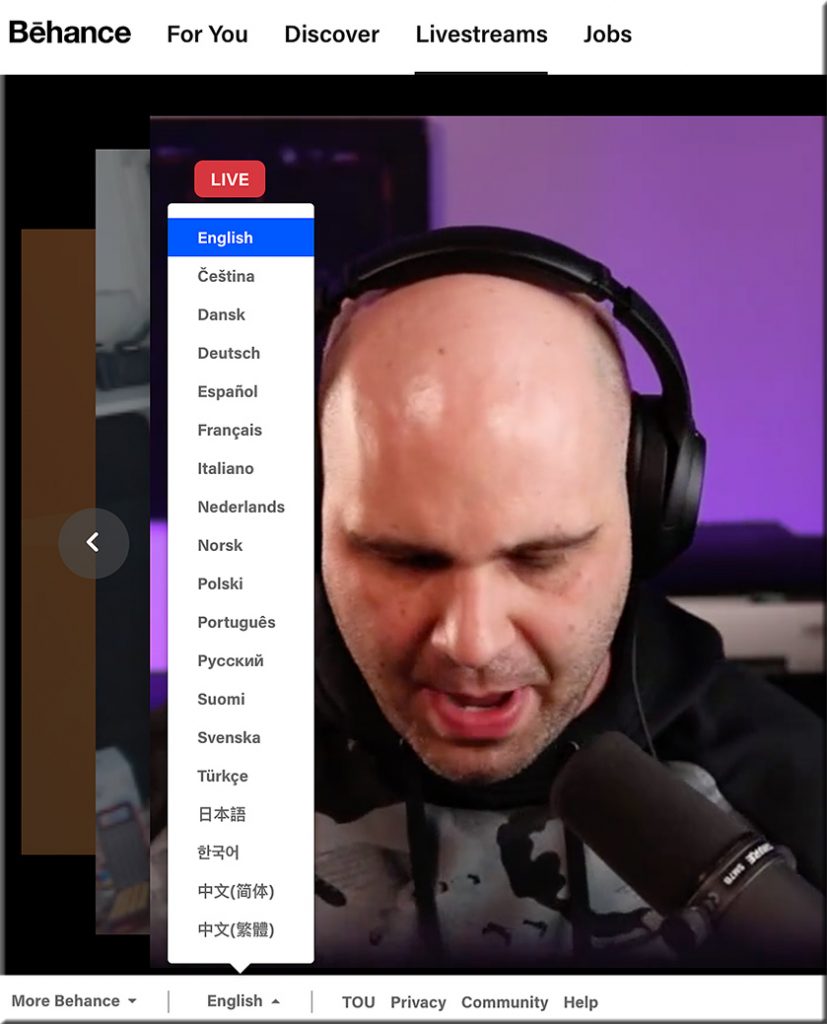
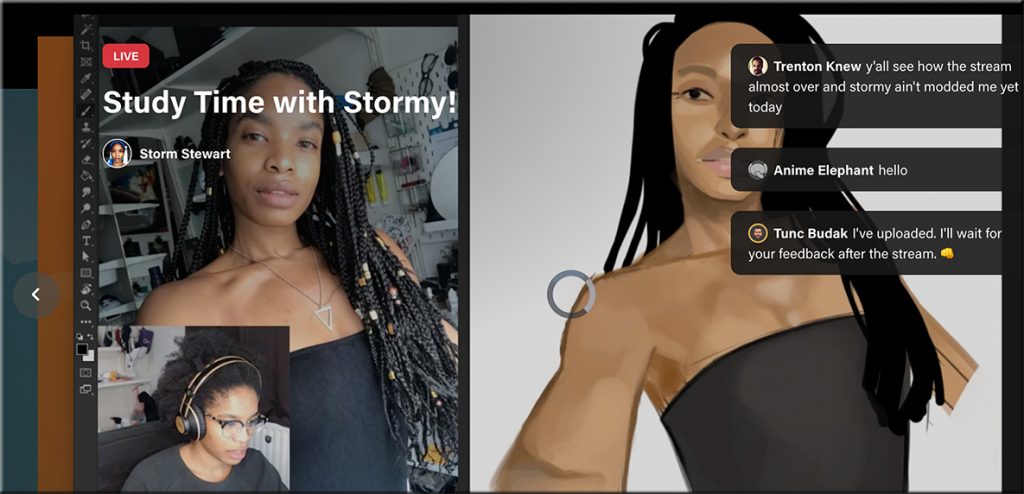



From DSC:
So Abobe — via Behance — is already doing several pieces of the “Learning from the Living [Class] Room” vision. I knew of Behance…but I didn’t realize the magnitude of what they’ve been working on and what they’re currently delivering. Very sharp indeed!
Churches are doing this as well — one device has the presenter/preacher on it (such as a larger “TV”), while a second device is used to communicate with each other in real-time.
This programming is being broadcast on special on-air channels established by each of the participating public television stations in Michigan. It is also available as a livestream and stored for on-demand viewing on a variety of digital platforms, ensuring accessibility to all students, teachers and families in the state.
An example schedule from About MLC:
From DSC:
It’s great to see this inclusive, FREE, convenient piece of the K-12 learning ecosystem! I’m all about this. Perhaps such a developing platform could integrate further interactivity and social/network-based learning into it:
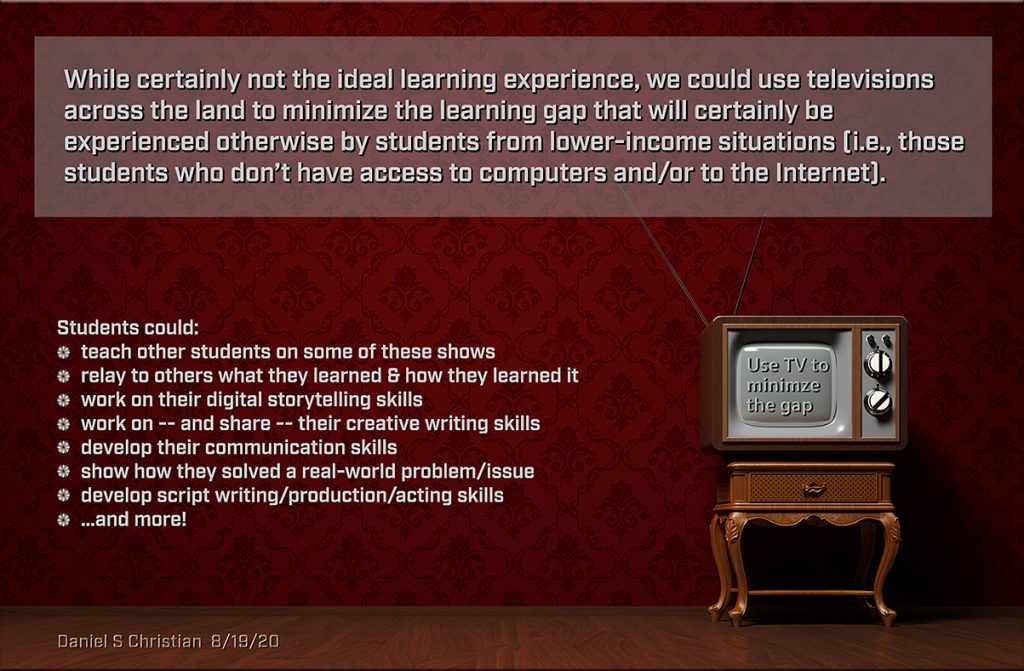
Also see:
8 Higher Education IT Trends to Watch in 2021 — from edtechmagazine.com by Adam Stone
Keep your eye on these trends as higher education prepares for a post-pandemic future.
Excerpt:
1. Get Used to More Advanced Learning Management Systems
At Virginia Tech, the Canvas learning management system (LMS) was critical for coordinating synchronous and asynchronous learning. Such systems will only become more sophisticated moving forward, says Randy Marchany, the university’s IT security officer. “With COVID, instructors have become more video savvy,” he says. “We’re all getting smarter about how we use these tools.”
2. A Rise in Sophisticated Videoconferencing Platforms
Even after the pandemic, educators might continue lecturing over Zoom and other videoconferencing platforms. However, they’ll be doing it in more sophisticated ways. “People will be making these experiences more collaborative, more authentic — with much richer interactions and conversations,” Grajek says. “We are all becoming more experienced consumers, and we will see a lot of innovation in this area.”
From DSC:
Yet another step closer…
Forever Changed: Education Predictions for 2021 — from thejournal.com by Dian Schaffhauser
Excerpt:
Teachers Will Become Massive Social Media Influencers
Teachers will be subject-matter experts who other teachers feature in video mixtapes and that parents will follow to support their students. Expect teachers to go live in Twitch-style “going live” environments. What can we expect in video?
Don’t force square-peg students back into wrong-shaped holes — from crpe.org by Robin Lake Paul Hill
But what gets lost in the reopening debate is the growing evidence that a significant portion of students and their families are actually happier and learn better outside of traditional schooling.
Excerpt:
Some of the “square-peg” children are the most creative and bright students in their class, but had struggled academically or socially in the traditional classroom. According to informal surveys of parents and teachers, new approaches to learning are benefiting:
From DSC:
One of our daughters needs a team of people around her to help her learn and grow. The one-size-fits-all, the-train-stops-for-no-one type of educational system that she often encountered did not work well for her.

Homeschooling has seen her grow a lot more. She even has her own blog now — and she’s excited about it! She loves reading and writing — and she’s very creative (albeit her writing gets pretty dark at times. But come to think of it…my second-grade teacher thought that my friend Andrew’s and my 38-page book with vampires, witches, and werewolves was pretty morbid too!)
A Record Year Amid a Pandemic: US Edtech Raises $2.2 Billion in 2020 — from edsurge.com by Tony Wan
Excerpts:
In 2020, U.S. education technology startups raised over $2.2 billion in venture and private equity capital across 130 deals, according to the EdSurge edtech funding database. That’s a nearly 30 percent increase from the $1.7 billion invested in 2019, which was spread across 105 deals.
From DSC:
After seeing the following two items, I wondered…should more professors, teachers, and staff members be on Substack?
Heather Cox Richardson Offers a Break From the Media Maelstrom. It’s Working. — from nytimes.com by Ben Smith
She is the breakout star of the newsletter platform Substack, doing the opposite of most media as she calmly situates the news of the day in the long sweep of American history.
Excerpt:
Last Wednesday, I broke the news to Heather Cox Richardson that she was the most successful individual author of a paid publication on the breakout newsletter platform Substack.
Early that morning, she had posted that day’s installment of “Letters From an American” to Facebook, quickly garnering more than 50,000 reactions and then, at 2:14 a.m., she emailed it to about 350,000 people.
…
The news of her ranking seemed to startle Dr. Richardson, who in her day job is a professor of 19th century American history at Boston College. The Substack leader board, a subject of fascination among media insiders, is a long way from her life on a Maine peninsula — particularly as the pandemic has ended her commute — that seems drawn from the era she studies.
Is Substack the Media Future We Want? — from newyorker.com by Anna Wiener
The newsletter service is a software company that, by mimicking some of the functions of newsrooms, has made itself difficult to categorize.
Excerpt:
…Substack, a service that enables writers to draft, edit, and send e-mail newsletters to subscribers. Writers can choose whether subscriptions are free or paid; the minimum charge for paid subscriptions is five dollars a month or thirty dollars a year, and Substack takes ten percent of all revenue.
The Year TV Leaped Into The Future — from protocol.com by Janko Roettgers
The lockdowns this year have transformed our homes into offices, schools, concert halls, movie theaters and gyms. Our homes are working harder for us, but so is our technology. The device that is working the hardest is perhaps the TV—becoming our lifeline to a far more virtual world.
Addendums:
The Second Year of The MOOC: 2020 Saw a Rush to Large-Scale Online Courses — from edsurge.com by Dhawal Shah
Excerpt:
This was the year that more people learned what a MOOC is.
As millions suddenly found themselves with free time on their hands during the pandemic, many turned to online courses—especially, to free courses known as MOOCs, or Massive Open Online Courses. This phenomenon was compounded by media worldwide compiling lists of “free things to do during lockdown,” which tended to include MOOCs.
Within two months, Class Central had received over 10 million visits and sent over six million clicks to MOOC providers. These learners also turned out to be more engaged than usual. In April 2020, MOOC providers Coursera, edX and FutureLearn attracted as many new users in a single month as they did in the entirety of 2019.
.
From DSC:
The pieces continue to come together…
...team-based content creation and delivery will dominate in the future (at least for the masses). It will offer engaging, personalized learning and the AI-based systems will be constantly scanning for the required/sought-after skills and competencies. The systems will then present a listing of items that will help people obtain those skills and competencies.
#AI #LearningProfiles #Cloud #LearningFromTheLivingClassRoom #LearningEcosystems #LearningSpaces #21stCentury #24x7x365 #Reinvent #Surviving #StayingRelevant #LifeLongLearning and many more tags/categories are applicable here.
How E-Learning Content Is Evolving: 7 Trends You Need to Know About — from trainingmag.com by Tiffany Harper
Continuous, personalized learning in small bites through a storytelling approach—that sums up the future of the e-learning industry.
Excerpt:
VR and AR
Technological innovations let us play better games. The progress of VR and AR technology (virtual reality and augmented reality) is closely related to the gaming industry, but that doesn’t mean it stays there.
We can turn any space into an environment that’s ready to explore. If we learn about the universe, we can see it around us. If we learn about industrial technology, we can be virtually present in a plant. This technology is especially important for corporate learning. Instead of sending employees away to develop new skills, companies benefit with lower expenses and greater convenience.
We haven’t seen the best of virtual and augmented reality in e-learning yet. But as the trend progresses and more learners get their devices, it won’t be unusual for AR and VR to be included in every online course of the future.
Social strikes back — from a16z.com
Social Strikes Back is a series exploring the next generation of social networks and how they’re shaping the future of consumer tech. See more at a16z.com/social-strikes-back.
Excerpt:
Until recently, it was commonly accepted that “social” was done. The market had been fully saturated, the thinking went, dominated by the holy trinity of Facebook, Twitter, and Instagram. Turns out, rumors of social’s demise have been greatly exaggerated. Not only are we seeing the rise of innovative new social networks—from the earshare of Clubhouse to the seamless interactivity of cloud gaming—but having a social component has become a powerful acquisition and retention tool for every consumer product, across education, shopping, fitness, food, entertainment, and more. In this series, we reveal what new social looks like, the forces that are driving it, and how to build it.
Meet Me in the Metaverse — from a16z.com by Jonathan Lai
Excerpts:
There are many competing visions for how we’ll build the Metaverse: a persistent, infinitely-scaling virtual space with its own economy and identity system.
…
New social modalities will emerge in the Metaverse. Advances in cloud streaming and AI will enable new forms of engagement with friends—for example, the ability to pop into a persistent virtual world and discover new people and experiences together, entirely unplanned.
Live, Social, and Shoppable: The Future of Video — from a16z.com by Connie Chan
Excerpt:
Now, we’re about to enter a whole new era of video-first products that extend far beyond entertainment and gaming. If phase one of video was a laid-back experience, video 2.0 will be far more interactive and participatory, with users engaging with the platform, giving direct feedback on the content, and fundamentally shaping the experience in real time.
Also see:
Edtech’s Answer to Remote Learning Burnout — from a16z.com by Anne Lee Skates and Connie Chan
Excerpt:
While previous generations of edtech largely focused on in-school content distribution, more recently founders have turned their attention to after-school and out-of-school education. There’s a lot left to build. We believe post-COVID online education will differ from the past in key ways.